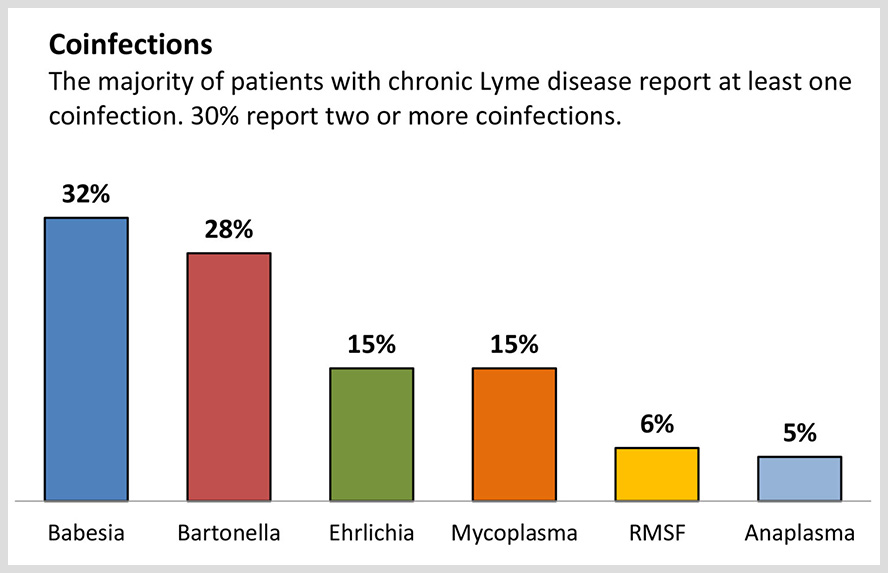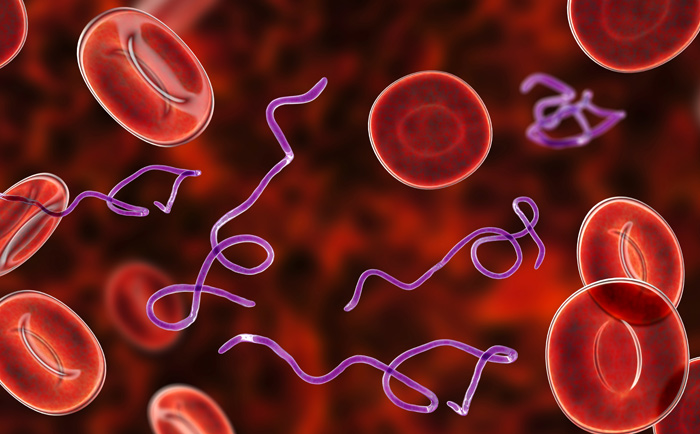Lyme disease co-infections
Lyme Disease Co-Infections Worsen Symptoms
Lyme disease is commonly thought of as one infection caused by the bacterium Borrelia burgdorferi, transmitted through the bite of a blacklegged tick. However, co-infections — where multiple pathogens are transmitted in a single tick bite — are more common than many realize. These may include bacteria, viruses, fungi, and protozoa.
These Lyme disease co-infections often lead to more severe illness, a wider range of symptoms and a more complicated recovery.
Medical professionals are encouraged to consider the possibility of co-infections — especially Babesia and Anaplasma — when patients with Lyme disease experience unusually intense symptoms or fail to improve with treatment. Other coinfections may also be involved and should not be overlooked.
Types of Co-Infections
Need Co-infection subtitle
How Common Are Co-Infections?
In the northeastern U.S., studies have found that up to 45% of blacklegged ticks carry more than one pathogen ─ meaning that a single tick bite can result in co-infections. And, up to a third of individuals diagnosed with Lyme disease, may also have at least one co-infection.
A survey conducted in endemic regions reported that nearly 1 in 5 people with Lyme disease also tested positive for the co-infection babesiosis.

While anaplasmosis and ehrlichiosis are less common, they still impact up to 10% of Lyme patients. And recent data indicates that the number of cases of Borrelia miyamotoi, another coinfection, is on the rise.

Top Co-Infections in Lyme Disease Patients
According to a survey by Lymedisease.org, out of 3,000 patients with chronic Lyme disease, over 50% had co-infections, with 30% reporting 2 or more. The most common Lyme disease coinfections include: Babesiosis (32%), Bartonella (28%), Ehrlichia (15%), Mycoplasma (15%), Rocky Mountain spotted fever (6%), and Anaplasma (5%).
However, in a study by Sperling and colleagues, the most common coinfections found in patients with Lyme disease were Bartonella (36%) and Babesia (19%), followed by Anaplasma (13%). The specific co-infections people develop can vary depending on geography. In this case, the study involved primarily Canadian patients.
Note: While both ticks and humans are known to carry Bartonella, scientists are still studying the exact way this infection is transmitted.
Why Lyme Disease Co-Infections Matter

01
More Severe Illness:
Co-infections often lead to more intense symptoms and longer recovery times.

02
Complicated Diagnosis:

03
Treatment Differences:
While Lyme disease is treated with antibiotics like doxycycline, Babesia requires anti-parasitic medications. Missing a co-infection can result in incomplete treatment.
Note: The information presented on this page has been reviewed and approved by a member of our Medical Leadership Board.
Could your symptoms be due to a tick-borne disease infection?
Take the first step towards understanding tick-borne disease with an exclusive guide to something here, all backed by world-leading science.





